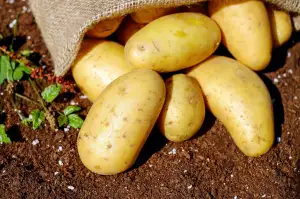Decoding the Shelf Life of Cheesecake: How Long Does It Stay Fresh?

Cheesecake is a delightful dessert loved by many, but have you ever wondered how long it stays fresh? Understanding the shelf life of cheesecake is essential to ensure that you enjoy it at its best. Various factors can affect its freshness, such as ingredients used, storage techniques, and temperature. In this article, we will explore these factors and provide tips on maximizing the shelf life of your cheesecake. So let's dive in and discover how to keep your cheesecake fresh and delicious for longer!
Factors Affecting the Shelf Life of Cheesecake
Several factors can affect the shelf life of cheesecake. The main factor is the ingredients used in making the cheesecake. Fresh and high-quality ingredients will result in a longer shelf life. Additionally, the type of cheese used can also impact how long the cheesecake stays fresh. Cheesecakes made with soft cheeses like ricotta or cream cheese tend to have a shorter shelf life compared to those made with harder cheeses like mascarpone.
Another factor to consider is how the cheesecake is stored. Proper storage techniques play a crucial role in extending its freshness. Cheesecakes should be stored in an airtight container or wrapped tightly in plastic wrap to prevent air exposure and moisture loss. Temperature also plays a significant role; storing cheesecake at a cool temperature, such as in the refrigerator, helps slow down bacterial growth and maintain its freshness for longer.
Lastly, the addition of any perishable toppings or fillings can affect the shelf life of cheesecake. Toppings like fresh fruits or whipped cream should be added just before serving to avoid their moisture seeping into the cake and causing it to become soggy.
By considering these factors, you can ensure that your homemade or store-bought cheesecake stays fresh for as long as possible, allowing you to enjoy its deliciousness for days after it's been made.
Proper Storage Techniques for Extending Cheesecake's Freshness
Proper storage techniques play a crucial role in extending the freshness of cheesecake. To keep your cheesecake tasting its best for as long as possible, follow these guidelines:
1. Refrigeration: Cheesecake should always be stored in the refrigerator. The cool temperature helps to slow down the growth of bacteria and maintain its texture. Place the cheesecake in an airtight container or cover it tightly with plastic wrap to prevent it from drying out or absorbing any odors from other foods.
2. Avoid moisture: Moisture can lead to a soggy crust and spoilage. To prevent this, place a paper towel or parchment paper underneath the cheesecake before storing it in the refrigerator. This will absorb any excess moisture and keep the crust crisp.
3. Keep away from strong odors: Cheesecake easily absorbs odors from other foods in the fridge, which can affect its flavor. Store it away from strong-smelling items like onions, garlic, or pungent cheeses.
4. Use within a few days: While cheesecake can last up to 5-7 days in the refrigerator, it is best consumed within 2-3 days for optimal freshness and taste.
By following these proper storage techniques, you can ensure that your cheesecake stays fresh and delicious for longer periods of time, allowing you to enjoy every bite without any compromise in quality.
How Long Does Cheesecake Last in the Fridge?
Cheesecake can last for about 5 to 7 days in the fridge. However, its shelf life may vary depending on several factors such as the ingredients used and how it is stored. It is important to note that cheesecake is a perishable dessert and should be consumed within a reasonable time frame to ensure its freshness and taste. To maximize its shelf life, it is recommended to store cheesecake in an airtight container or wrap it tightly with plastic wrap before placing it in the refrigerator.
Can Cheesecake be Frozen for Longer Storage?
Yes, cheesecake can be frozen for longer storage. Freezing is a great way to extend the shelf life of cheesecake and enjoy it at a later time. However, it's important to follow proper freezing techniques to maintain its quality. Firstly, make sure the cheesecake is completely cooled before freezing. Wrap it tightly in plastic wrap or aluminum foil to prevent freezer burn and moisture loss. Place it in an airtight container or freezer bag to further protect it from odors and freezer burn. When you're ready to enjoy the frozen cheesecake, thaw it in the refrigerator overnight. Avoid thawing at room temperature as this can lead to texture and flavor changes. Freezing can extend the shelf life of cheesecake for up to 2-3 months, allowing you to savor its deliciousness whenever you desire!
Signs of Spoiled Cheesecake: When to Discard
It is important to be able to identify when cheesecake has gone bad to avoid any potential health risks. Here are some signs that indicate your cheesecake may have spoiled:
1. Mold growth: If you notice any mold on the surface or edges of the cheesecake, it is a clear indication that it has gone bad. Mold can be harmful if consumed.
2. Foul odor: A strong, unpleasant smell coming from the cheesecake is another sign of spoilage. Fresh cheesecake should have a mild, creamy aroma.
3. Changes in texture: If the texture of the cheesecake becomes excessively dry, crumbly, or slimy, it is likely no longer safe to eat.
4. Discoloration: Any unusual discoloration, such as dark spots or patches on the cheesecake, indicates spoilage and should not be consumed.
If you observe any of these signs, it is best to err on the side of caution and discard the cheesecake. Eating spoiled food can lead to foodborne illnesses and unpleasant digestive issues. Always prioritize your health and safety when it comes to consuming perishable foods like cheesecake.
Tips for Maximizing the Shelf Life of Cheesecake
To maximize the shelf life of cheesecake and keep it fresh for as long as possible, here are some helpful tips:
1. Use fresh ingredients: Start with high-quality ingredients to ensure a longer shelf life for your cheesecake. Fresh dairy products, such as cream cheese and sour cream, will contribute to its overall freshness.
2. Properly cool the cheesecake: Allow the cheesecake to cool completely at room temperature before transferring it to the refrigerator. This helps prevent condensation from forming on the surface, which can lead to a soggy crust.
3. Store in an airtight container: Place the cheesecake in an airtight container or wrap it tightly with plastic wrap. This will help prevent any odors from seeping into the cake and also protect it from drying out.
4. Keep away from strong-smelling foods: Avoid storing your cheesecake near foods with strong odors, as it can absorb these smells easily. This will help maintain its original flavor and aroma.
5. Avoid frequent temperature changes: Keep the cheesecake stored in a consistent temperature environment, preferably in the refrigerator where it can stay cool and fresh. Frequent temperature changes can cause condensation and affect its texture.
6. Slice only what you need: If you're not planning on consuming the entire cheesecake at once, slice off only what you need and leave the rest untouched until ready to serve. This prevents unnecessary exposure to air and helps retain its freshness.
By following these tips, you can extend the shelf life of your cheesecake and enjoy its deliciousness for longer periods of time.
In conclusion, by understanding the factors that affect the shelf life of cheesecake and following proper storage techniques, you can enjoy fresh and delicious cheesecake for a longer period. Remember to always refrigerate your cheesecake promptly and consume it within 5-7 days for optimal freshness. Freezing is also an option for extended storage, but be sure to wrap it tightly to prevent freezer burn. Keep an eye out for signs of spoilage and discard any cheesecake that has gone bad. By following these tips, you can savor every bite of your homemade or store-bought cheesecake with confidence and satisfaction.
Published: 19. 11. 2023
Category: Food



